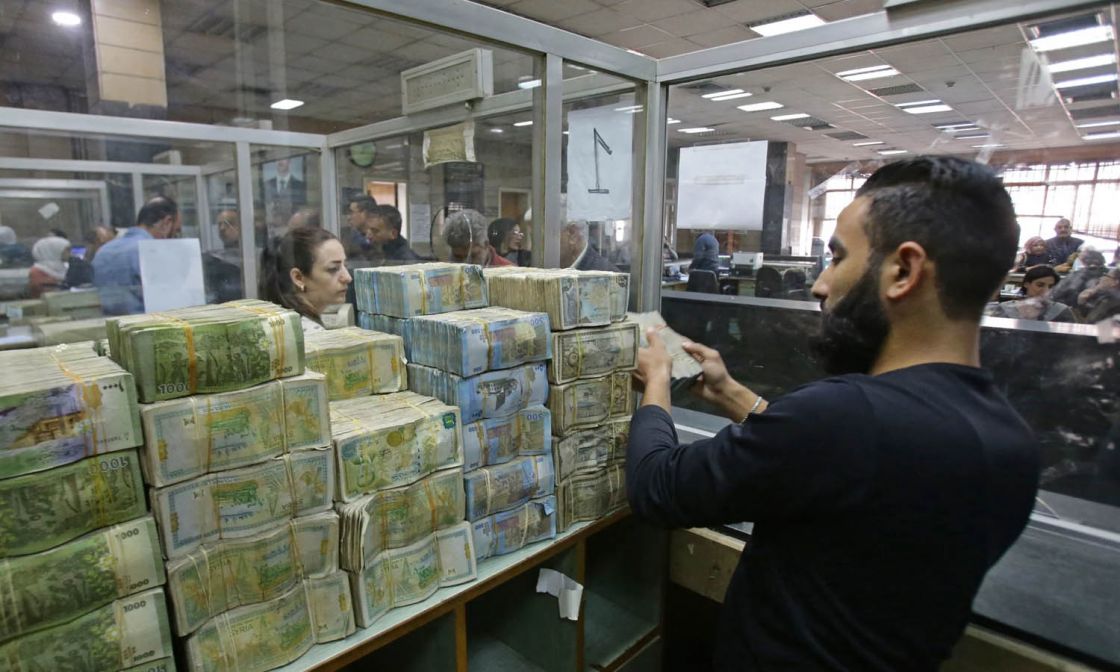- Editorials
- Posted
Kassioun Editorial 1136: Nominal Increase and Actual Decrease
The share of wages in the national income is divided into two main items: the wages/salaries block and the subsidy block. Any talk of increasing wages should consider these two items together.
Since the authorities are talking about raising wages in exchange for a reduction in subsidies, raising wages when it is inflationary, that is, when the new salary buys what the old salary was buying, or a little more or less, as is usually the case, then what actually happened, at best, is to keep the wage block as is, with an additional reduction in subsidies. More clearly, it is a new and additional plundering process from the share of the wage-earners to the profit-holders.
Looking at the wages and standard of living after the recent salary increase decree, which was accompanied by primarily an official campaign to increase prices, in addition to an unofficial one, that is, a new campaign targeting the remaining subsidies, we see the following:
- Before the “increase”, the minimum standard of living for a family of five was about 4,100,000 Syrian pounds (SYP); after the “increase”, it became about 6,490,000 SYP, bearing in mind that this figure reflects only the current moment. What is certain is that prices have not stabilized after the recent measures and will continue rapidly increasing over the next few days and weeks.
- Before and after the “increase”, the minimum wage – assuming that in a family of five, two people work – covers only 5% of the basic costs of living.
Once again, this cost calculation is one week after the increase, and prices continue to rise, and soon the small difference in the purchasing value of the wage will be devoured, and its purchasing value may decline below its previous value before the increase.
Without complicating the calculations (this Kassioun issue presents a complete file covering this), in short what happened is that every subsidy reduction that took place during this period, and every price hike, actually took place without any compensation. Further, every Syrian pound that was deducted from the subsidy went directly to the share of the profit-earners, and none of it went to the wage earners.
In parallel with these calamities that successively befalling 90% of Syrians, the exchange rate of the Syrian pound against the dollar continues to collapse with an unprecedented acceleration. The 15,000 SYP to the dollar has become just an indicator threshold for the upcoming collapse, when it was around 10,000 SYP to the dollar just last month.
The ongoing debate about the current policies and this act of exchanging responsibilities between the government and the People’s Assembly, deliberately obscure the role of the class segment that dominates the decisions of the People’s Assembly and the government, and particularly the role of the Central Bank of Syria as an essential tool in the hands of this segment.
The savage liberal policies that are hostile to all Syrians are the constant approach of the dominant class segment, regardless of changes of governments and the People’s Assembly and their members. This consistent approach of this same segment includes continuous action against turning East, and against ridding the Syrian pound of its dependence on the dollar. Despite all the opportunities presented by the new international balances, this segment’s behavior indicates that it is organically linked with the West, primarily economically, as well as politically.
At this point, it becomes completely understandable why there is work against the Astana tripartite, and against seeking to curb Western sanctions and blockade through a Syrian-Turkish settlement. It also becomes understandable why there is work against Arab rapprochement with Syria, and against efforts to restore stability and unity of the country.
Above all, it also becomes understandable why there is feverish work to demonize the popular movement with its new wave even before it gets on its feet, and in parallel there is work to set traps for it in all possible ways, and through extremists in both the regime and the opposition alike.
There is no economic solution to the Syrian economic and living crisis, and there is no humanitarian solution to the humanitarian catastrophe that the Syrians are living through. The economic paralysis and stroke have already occurred, and the solution was and still is a political solution through UNSC Resolution 2254 through an understanding between Astana and the main Arab countries on the one hand, and through the steady and gradual growth and development of the Syrian popular movement, accompanied with awareness and organization in which the movement benefits from all the previous lessons, the price of which were innumerable sufferings and pains.


